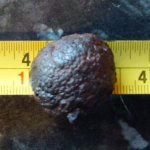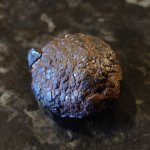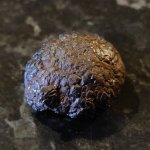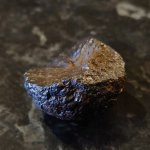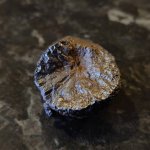Hi, I found this in Wiltshire England. Can anyone recognise the mineral, or suggest if it looks like a meteorite or not?. I've measured its density, which i get at roughly 3.85 g/cc. It's about an inch across. It ticks a lot of boxes for being a meteorite, but it doesn't look smooth or molten on the outside. It's very weakly magnetic, (i can't feel it, but if i float it on a raft on water, i can pull it around with a magnet).
Thanks in advance,
Nat
Thanks in advance,
Nat


